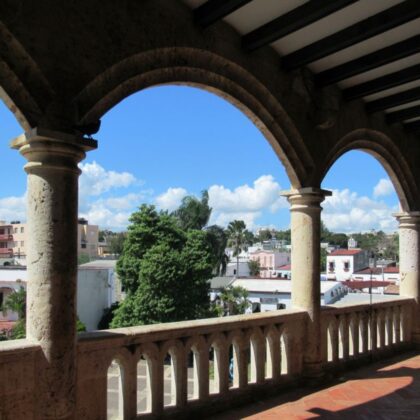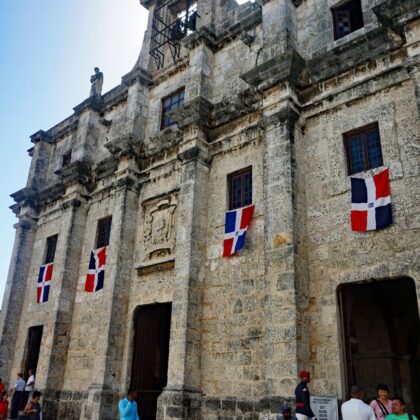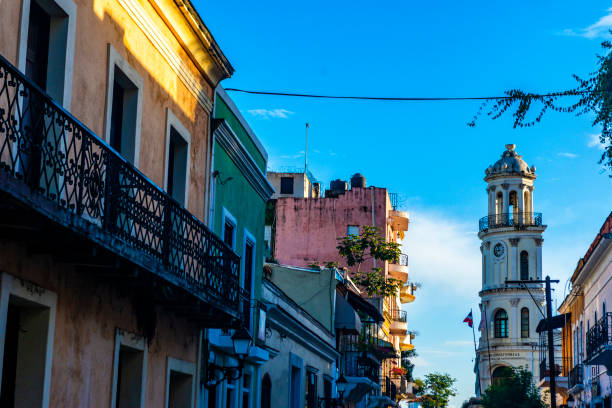Disclosure: This post may contain affiliate links, meaning IC Caribbean gets a commission if you decide to make a purchase, at no additional cost to you
Santo Domingo: 7 memorable wonders you cannot miss
The capital of the Dominican Republic, Santo Domingo, is the most modern and energetic city in the Caribbean. It represents the heart of Dominican culture, mixing the old and the new harmoniously.
Visiting the Colonial City – the first European settlement in the Americas and declared a UNESCO World Heritage Site in 1990 – is a recommended experience for all travelers.

Las Ruinas de San francisco
The rustic and spectacular stone-walled ruins of the San Francisco Monastery occupy large blocks of the Colonial City – between Duarte and Hostos streets. This is the first Franciscan monastery of the 16th century in the New World, the vast, unoccupied ruins provide a fascinating natural backdrop for photographers and serve as a reminder of what was once. It went through several catastrophes, including a fire set by Sir Francis Drake and a couple of earthquakes, before being used as an insane asylum until the mid-20th century.

Panteón de la Patria
The neoclassical exterior of the National Pantheon, which towers over Las Damas Street with the Dominican national emblem engraved with a trio of bells, has an equally impressive interior. Guarded daily by a presidential honor guard, this former 18th-century Jesuit church became the country’s national mausoleum in 1956.
It houses the remains of Dominican heroes. Explore its eye-catching baroque interior, with a mural on the ceiling portraying the ascension to heaven and the Last Judgment, and an eternal flame burning underneath it.

Fortaleza Ozama
Originally built by the Spanish in the early 16th century, the Fortaleza del Ozama is the first permanent military structure in the Americas and marks the beginning of Spanish colonization. Located at the back of an extended stone-walled site, the fortress was built to resemble a medieval castle and is marked by an 18-meter-high central tower. The tower’s winding spiral staircase leads to a lookout with stunning views over the Ozama River and the port of Santo Domingo.
Also visible are the original cannons facing the river to protect the entrance to the city from pirates and invaders. Construction of the fortress lasted from 1502 to 1508, directed by the then governor of Santo Domingo, Fray Nicolás de Ovando. Admire the fort’s original coral stone material and medieval appearance, but also explore its interior tunnels and the surrounding rooms where prisoners, including Christopher Columbus, were held captive.

The Museo de las Casas Reales was utilized as the Royal Court of the Spanish Governor in the 16th century: it hosted the governor’s palace, the finance office, and the judicial courts. Today, the museum offers an overview of the history of the Dominican Republic, from the colonial period of 1492 to the days of the country’s first independence from Spain in 1821.
You’ll find exhibits on Columbus’ many trips, with replicas of his vessels, a collection of treasures from the era, and weapons from the time of dictator Rafael Leonidas Trujillo, among other artifacts. The building itself is an impressive display of colonial architecture, set off by large Spanish patios.
Museo De Las Casas Reales

Plaza de España
At the end of Las Damas Street is one of the most picturesque esplanades in the Colonial City. The wide Plaza de España is bordered by the Alcázar de Colón at one end and, at the other, by a series of open-air terraces where diners enjoy a magnificent view of the old city. Important concerts, cultural shows, and festivals are held in this square. At sunset, it is the perfect place for a romantic dinner with a view or a family walk or bike ride with the kids. A statue of Nicolás de Ovando, former governor of Santo Domingo, stands in the center of the square.

Alcazar de Colón
One of the Colonial City’s most popular museums is also its most stunning architecture. Completed around 1512, this Gothic and Renaissance-style palace was once the home of Diego Columbus, son of Christopher Columbus, and his wife Maria de Toledo, niece of King Ferdinand of Spain.
Facing the Plaza de España on one side and the Ozama River on the other, it is the oldest vice-royal family residence in the Americas and the first fortified palace, transformed into a museum displaying furniture, art, musical instruments and weapons from the 16th century.
There are sinuous staircases leading to the couple’s well-preserved bedrooms and the luxurious ballroom, illuminated by crystal chandeliers, where the Spanish aristocracy’s functions were held.

Traditional desserts to conclude the journey
If one chooses not to go back and descend Emiliano Tejera Street in the direction of Plaza de España, a great idea is to head for a Dominican classic. La Casa de Los Dulces, at number 106, is the best excuse to let yourself be captivated by tradition with a whole variety of sweets brought from each and every one of the provinces of Santo Domingo. They also sell typical liquors. The difficult thing, in this case, is to choose just one thing.
Certainly, it is worth giving a “sweet” goodbye to any walk through the colonial area of Santo Domingo. A city in which it is inevitable to leave things behind, not only in the historic center but also in the city that gave us the opportunity to visit it.

Additionally, before you travel be sure to check out our IC Caribbean Shop for your cool travel accessories, bags, and gear to rep during your visit or upon your return to remember your favorite Caribbean destinations.
Enjoy your vacation and stay safe!


0 Comment